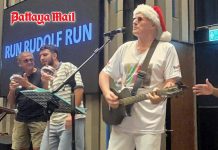
One day when I was still at high school in The Old Country, I was summoned to the Headmaster’s study. He was seated behind an over-sized desk in a small and dingy room. “Ah, Kaye”, he announced as I tentatively walked in. I could tell from his icy tone that this was not going to be Good News Day. “I think you should be aware” he began slowly as though addressing an imbecile, “that you have distinguished this fine school with the lowest mark in physics ever recorded.” This came as a bit of set-back to someone who had imagined one day being the Astronomer Royal. But the Headmaster was right. I had no talent for physics and I hated those dreary unforgiving coefficient of friction questions involving blocks on inclined planes. The curious thing was that I was fascinated – and still am – by the ideas of science but as soon as the equations appeared my mind seemed to go blank.
You might be surprised to know that science has inspired several 20th century works. In 1975 John Cage composed his Etudes Australes based on star charts. The following year, Philip Glass wrote his five-hour opera Einstein on the Beach. In 2009, The Wellcome Trust commissioned British composer Michael Zev Gordon to write a piece based on DNA genetic analysis. However, fifty years earlier the Polish composer Penderecki had done something slightly similar. And so this week, let me offer you two musical challenges. But be warned, this is not music for the faint of heart or those of a delicate disposition.
This extraordinary piece was used in Stanley Kubrick’s compelling movie The Shining and perhaps more famously in William Friedkin’s The Exorcist. Krzysztof Penderecki (KZHISH-toff pen-der-ETS-kee) has been described as Poland’s greatest living composer and the title of this work is derived from the Greek word poly meaning “many” and morph meaning “shape” or “form”. Polymorphia is scored for forty-eight stringed instruments and is probably one of the most unintentionally scary-sounding works ever written.
Conventional melody and harmony don’t exist in the bleak sound-world that Penderecki created. Parts of the work are based on sound interpretations of medical electroencephalograms which detect electrical activity in the brain and record it the form of wavy lines. These were recorded at a medical facility while volunteer patients listened to Penderecki’s well-known work, Threnody for the Victims of Hiroshima. This created a pleasing symmetry which must have brought considerable satisfaction to the composer. Of course, you’d never have guessed that this unsettling music was inspired by brain waves, but it doesn’t really matter. It’s the thought that counts.
Steve Reich (b.1936): Dolly from “Three Tales”. Duration: 26:27; Video: 720p HD)
Three Tales was described by the composer as a video-opera in three acts. The work was inspired by technological development and the three acts concern (1) the disastrous explosion of the Hindenburg airship in 1937, (2) nuclear testing on Bikini Atoll in the western Pacific Ocean and (3) the cloning of Dolly the sheep in 1997.
Steve Reich is closely associated with the minimalist movement and perhaps best known for his work Different Trains scored for string quartet and audio tape. Three Tales is a multimedia work with visuals created and skillfully edited by Beryl Korot who is also Reich’s wife. The music is scored for two sopranos, three tenors, string quartet, percussion, keyboards and pre-recorded audio. Its premiere was at the Vienna Festival in 2002 where it was enthusiastically received and it has since been performed at many international festivals.
The third movement, inspired by the cloned sheep named Dolly uses not only music and images but also fragments of speech cut from interviews with members of the scientific and religious communities including Marvin Minsky, Richard Dawkins and Rabbi Adin Steinsaltz. “Dolly” is all about robotics, genetic engineering and the notion of the human body as a machine. The fragments of speech often repeat as though on a loop; sometimes single syllables are repeated and heard in slow motion.
Sometimes Reich uses an audio technique known as “freeze frame sound”. As a single phoneme is extended in duration, the original word becomes meaningless and transformed into something else. This might seem eccentric but the process is remarkably similar to the way composers develop musical phrases. Reich skillfully weaves the fragmented speech into the relentless background of cross-rhythms from piano and percussion.
The brilliant visuals are remarkably expressive and also contain fleeting reference to the previous two acts. The work makes for a powerful and often disturbing experience, yet there are sometimes strangely inspirational moments. There are touches of humour too and even Dolly herself manages to get a brief word in. You can probably guess what she says.
 |
 |
 |





